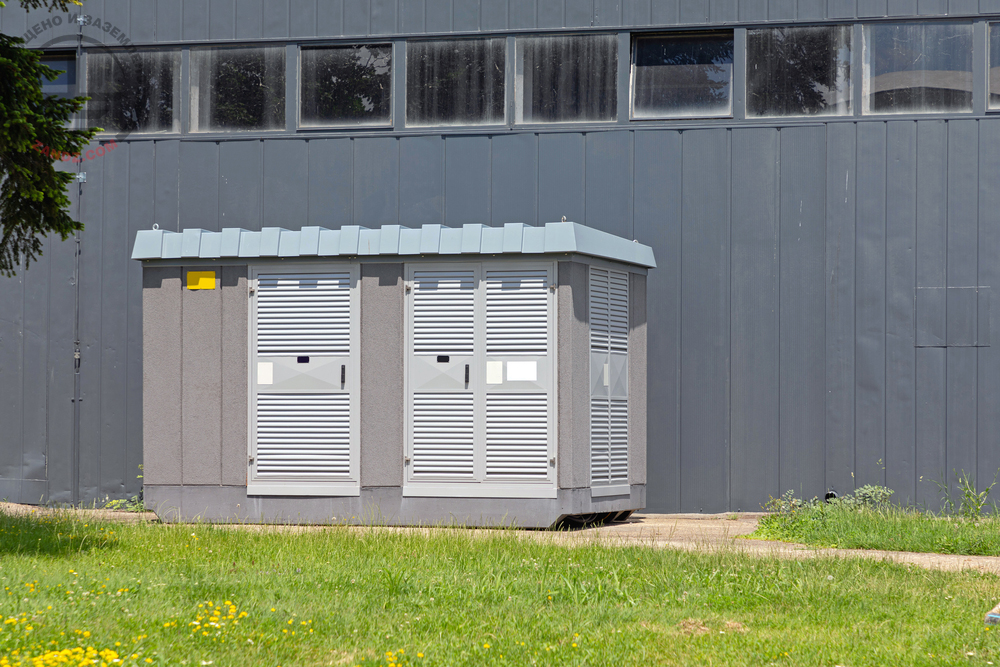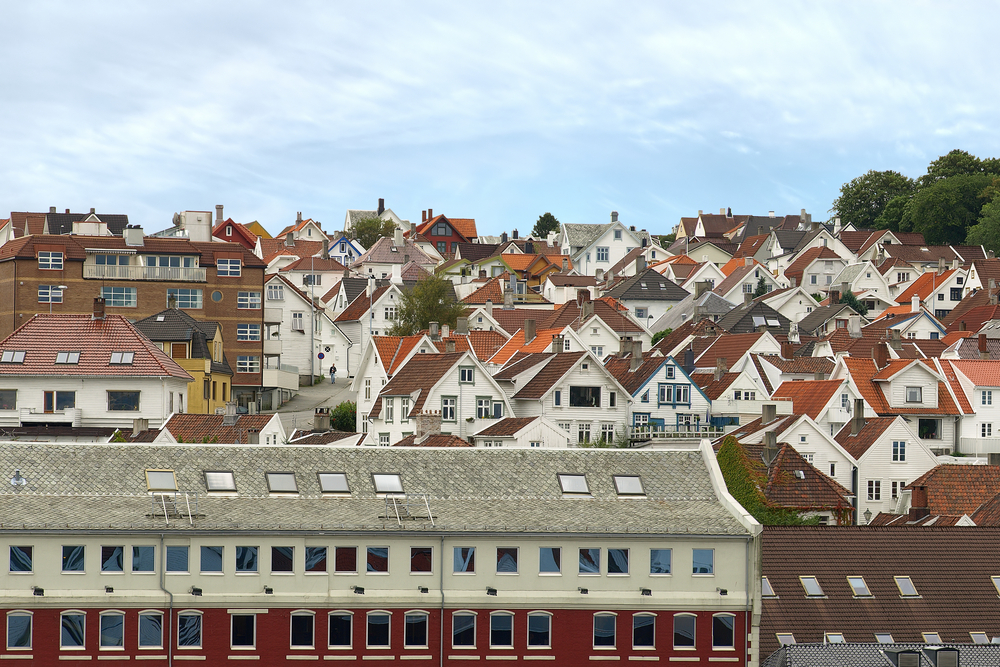
When designing external lightning protection of the building, we have to consider the structures surrounding it. All facilities, if they are higher than the protected one, will be natural lightning arresters relative to it. In some cases, the installation of artificial lightning rods may not be required at all.
We can determine several approaches when calculating the lightning protection using natural lightning arresters. They will differ in the relationship between the heights of the protected building and facilities around it. You can learn more about these approaches below. After reading, please study the section "What About Internal Lightning Arrester?" Probably, for some of you, it will be the most important aspect in the article.
Low building, high natural lightning arrester
Let's take a common facility, i.e. a complete transformer substation located near the multi-storey residential house. We can definitely say that the CTS near the house is protected from the direct lightning strike because of the high-rise building. This is evident even for a low-skilled engineer. Surely, for the project, you have to generate a protection zone, e.g. using formulas from Appendix 3 of RD 34.21.122-87. Usually, the protection zone in these cases significantly exceeds the zone sufficient for the lightning protection of CTS and similar low facilities. It means that the lightning strike probability to the protected building is minimal.
When calculating reliability of lightning protection for CTS in the software at the ZANDZ.com, we will receive the protection reliability close to 1, i.e. the value of 0.999999 is possible. The probability of lightning strikes will be once in several thousand years. Any person may perform calculations at our website, and may see the numbers.
Building and natural lightning arresters are of about the same height

If natural lightning arresters do not exceed the height of the protected building significantly, the calculation will surely be needed. In this case, it will be difficult to generate zones only graphically, the calculation will be too complex. It is desirable to engage the mentioned software at the ZANDZ.com website, and with this approach it will be essential. Software calculation will make the work much easier. We won't have to develop complex protection zones for the facilities of varied heights, and natural lightning arresters and their heights will be easier to consider.
Probably, the required protection level may be obtained immediately, but even if this won't happen, the lightning protection system may be supplemented by artificial lightning rods. In any case, natural lightning arresters will be useful to make the design cheaper and simpler.
What about internal lightning protection?
We intentionally didn't mention in the introduction "external lightning arrester", because any kind of lightning arresters, even the highest, will be able to protect from lightning current flowing but not from its secondary effects. And now, a single drawback of the lightning protection system with natural lightning arresters appears. If the facility is protected from the lightning in an integrated fashion, then along with lightning rods, the focus is also given to the surge protection. In case of using natural lightning arresters only, you should also focus on internal lightning protection for the protected facility!
The closer the protected facility to the natural lightning arrester, the higher surge voltage will interfere to the electrical circuits and metal structures of the protected building, and the higher the level of the brought pulse will come to the incoming utilities. To limit them, you will need surge protection devices (SDPs) as well as potential equalizing means, preferably as a circuit around the building connected with the metal frame, foundation, and incoming utilities.
Without these solutions, natural lightning arrester will not do any good but cause harm. There will be pretty much interference from the lightning current flowing nearby so that the equipment in the building not protected from surges would burn out. Note that the natural lightning arrester itself may be equipped with both external and internal lightning protection, although this will not help much for the protected building.
Conclusion
Natural lightning arresters may simplify the lightning protection design significantly, make the design cheaper, and reduce its development time. But there is a less evident danger behind the simplicity. Do not forget about secondary effects of the lightning as all advantages of the natural lightning arrester may be eliminated by them.
Contact ZANDZ Technical Centre to calculate external and internal lightning protection!
Related Articles:



